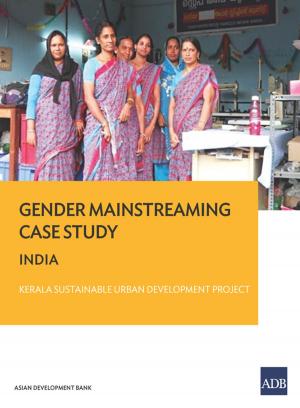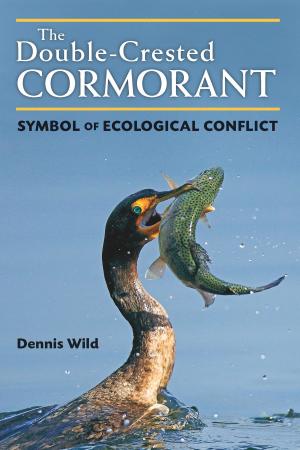| Author: | Rachele Malavasi | ISBN: | 9781370768301 |
| Publisher: | Rachele Malavasi | Publication: | August 5, 2016 |
| Imprint: | Smashwords Edition | Language: | English |
| Author: | Rachele Malavasi |
| ISBN: | 9781370768301 |
| Publisher: | Rachele Malavasi |
| Publication: | August 5, 2016 |
| Imprint: | Smashwords Edition |
| Language: | English |
In the last forty years, the interest towards the mental skills of non-human animals (from now on, animals), their cognitive abilities and, more broadly, their behavior, has grown. Animals are able to form mental representations of reality, are able to recognize each other individually, to learn socially and to communicate intentionally. They have been declared “sentient beings” in the Treaty of Amsterdam, and thus able to feel good and suffer. What does it mean practically?
To “feel good” includes being able to express species-specific skills. Horses can travel up to 30km/day, and the functionality of their digestive system works at best in motion; they can recognize conspecifics and live in complex fission-fusion societies. Even so, many owners keep horses in “boxes” where their movements are deeply limited and their social life is reduced to a minimum (Chapter Two, by Pia Lucidi). Similarly, iguanas, present in domestic contexts as exotic pets, have a social life that includes peculiar forms of greeting, such as body and chin rubbing, tail wagging, head bobs, mutual tongue licking, and allogrooming (Chapter Five, by Gionata Stancher). Keeping iguanas in isolation excludes the possibility for them to perform these displays and engage in affiliative interactions with peers.
Other animals scarcely considered for their intellectual skills, yet often present on our plates, are chickens. To “avoid pain” also means to “have access to cures.” When given the opportunity, chickens prefer to feed on food integrated with painkillers: this act of self-medication suggests that chickens do perceive their pain and act to alleviate it (Chapter One, by Cinzia Chiandetti).
Even fish, for which the ability to perceive pain is still debated, should have the right to “feel good” in terms of “feeling safe”: some fish species engage in cooperative behaviors where they swim together toward a potential predator to inspect its degree of dangerousness (Chapter Four, by Maria Elena Miletto Petrazzini). Safety is in numbers!
In our city, block, building, or even in our apartment live many other visible (and invisible) species with incredible cognitive skills, single individuals that are motivated by the need to feel good and avoid pain as well. To “avoid pain” may be for example translated as “to avoid thirst or hunger.” So, fruit flies travel over 15 kilometers to find a water spot, and from taking-off to navigation and landing, sophisticate sensory-motor and cognitive abilities are needed (Chapter Seven, by Elisabetta Versace).
Of course, this book couldn’t miss a chapter on human’s best friend, dogs, so plain in expressing their feelings to the point of establishing an attachment bond with the owner (Chapter Six, by Tiziano Travain and Paola Maria Valsecchi). Similarly, cats lived in our houses for millennia and even evolved the ability to elaborate their vocalization by including the vocal elements of baby’s cries that solicit human females to provide the desired treats (Chapter Three, by Isabella Merola and Rachele Malavasi).
The aim of this volume is to promote, through knowledge, the welfare of some of the species that live closest to humans. We provide here an overview of the cognitive skills and their ontogeny of dogs, cats, fish, chickens, horses, fruit flies, and reptiles, without demanding completeness but rather focusing on some peculiar skills or aspects of each one. We choose to use a simple and accessible language: this volume may not only be of interest to academics but also to the broad public and associations for animal rights or safeguarding animal welfare. They would find in this volume an objective and accurate guide towards a deeper understanding of these species. The book has seven chapters, each written by a senior researcher and correlated with an in-depth information box. All contributions included in this volume come from Italian researchers in support of the cultural excellence of this country.
In the last forty years, the interest towards the mental skills of non-human animals (from now on, animals), their cognitive abilities and, more broadly, their behavior, has grown. Animals are able to form mental representations of reality, are able to recognize each other individually, to learn socially and to communicate intentionally. They have been declared “sentient beings” in the Treaty of Amsterdam, and thus able to feel good and suffer. What does it mean practically?
To “feel good” includes being able to express species-specific skills. Horses can travel up to 30km/day, and the functionality of their digestive system works at best in motion; they can recognize conspecifics and live in complex fission-fusion societies. Even so, many owners keep horses in “boxes” where their movements are deeply limited and their social life is reduced to a minimum (Chapter Two, by Pia Lucidi). Similarly, iguanas, present in domestic contexts as exotic pets, have a social life that includes peculiar forms of greeting, such as body and chin rubbing, tail wagging, head bobs, mutual tongue licking, and allogrooming (Chapter Five, by Gionata Stancher). Keeping iguanas in isolation excludes the possibility for them to perform these displays and engage in affiliative interactions with peers.
Other animals scarcely considered for their intellectual skills, yet often present on our plates, are chickens. To “avoid pain” also means to “have access to cures.” When given the opportunity, chickens prefer to feed on food integrated with painkillers: this act of self-medication suggests that chickens do perceive their pain and act to alleviate it (Chapter One, by Cinzia Chiandetti).
Even fish, for which the ability to perceive pain is still debated, should have the right to “feel good” in terms of “feeling safe”: some fish species engage in cooperative behaviors where they swim together toward a potential predator to inspect its degree of dangerousness (Chapter Four, by Maria Elena Miletto Petrazzini). Safety is in numbers!
In our city, block, building, or even in our apartment live many other visible (and invisible) species with incredible cognitive skills, single individuals that are motivated by the need to feel good and avoid pain as well. To “avoid pain” may be for example translated as “to avoid thirst or hunger.” So, fruit flies travel over 15 kilometers to find a water spot, and from taking-off to navigation and landing, sophisticate sensory-motor and cognitive abilities are needed (Chapter Seven, by Elisabetta Versace).
Of course, this book couldn’t miss a chapter on human’s best friend, dogs, so plain in expressing their feelings to the point of establishing an attachment bond with the owner (Chapter Six, by Tiziano Travain and Paola Maria Valsecchi). Similarly, cats lived in our houses for millennia and even evolved the ability to elaborate their vocalization by including the vocal elements of baby’s cries that solicit human females to provide the desired treats (Chapter Three, by Isabella Merola and Rachele Malavasi).
The aim of this volume is to promote, through knowledge, the welfare of some of the species that live closest to humans. We provide here an overview of the cognitive skills and their ontogeny of dogs, cats, fish, chickens, horses, fruit flies, and reptiles, without demanding completeness but rather focusing on some peculiar skills or aspects of each one. We choose to use a simple and accessible language: this volume may not only be of interest to academics but also to the broad public and associations for animal rights or safeguarding animal welfare. They would find in this volume an objective and accurate guide towards a deeper understanding of these species. The book has seven chapters, each written by a senior researcher and correlated with an in-depth information box. All contributions included in this volume come from Italian researchers in support of the cultural excellence of this country.















